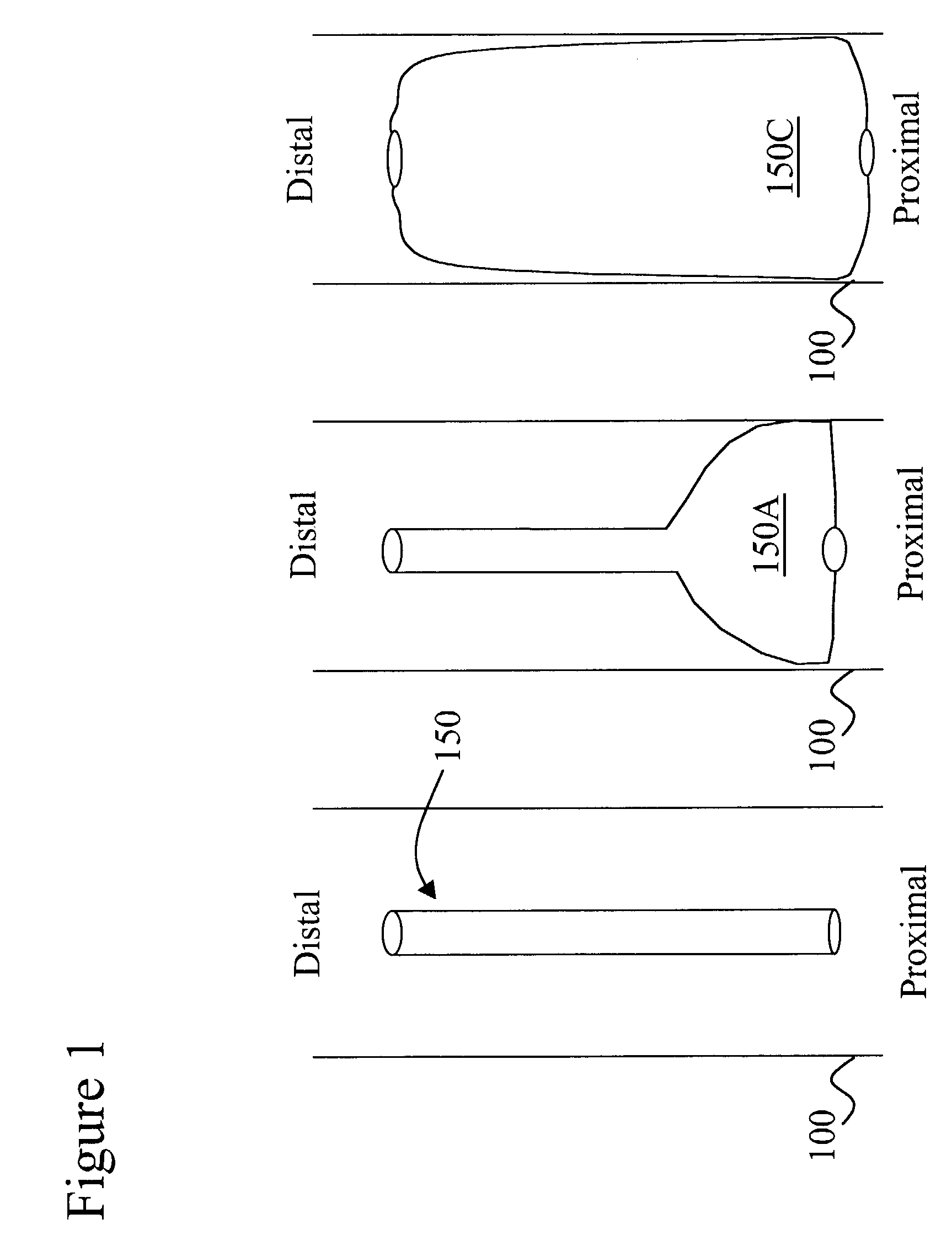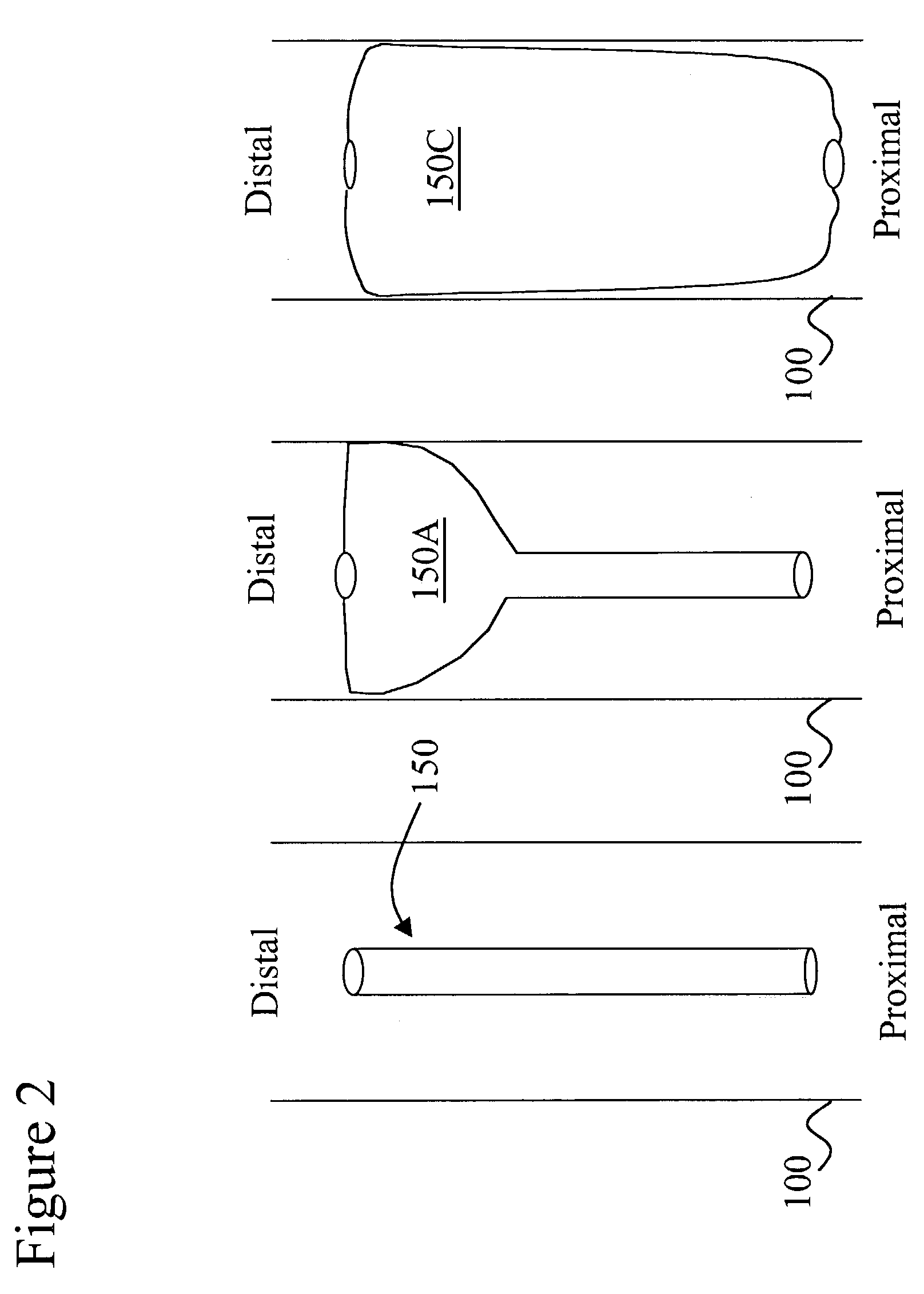Device and method for medical interventions of body lumens
a technology of body lumens and devices, applied in the field of medical interventions, can solve problems such as blockage of distant blood vessels, stroke, heart attack, hypertension, etc., and achieve the effects of reducing the risk of strok
- Summary
- Abstract
- Description
- Claims
- Application Information
AI Technical Summary
Benefits of technology
Problems solved by technology
Method used
Image
Examples
Embodiment Construction
[0015]Although the following detailed description contains many specifics for the purposes of illustration, anyone of ordinary skill in the art will readily appreciate that many variations and alterations to the following exemplary details are within the scope of the invention. Accordingly, the following preferred embodiment of the invention is set forth without any loss of generality to, and without imposing limitations upon, the claimed invention.
[0016]The present invention is aimed at medical interventional procedures inside a body lumen. In some cases it is desired or needed to protect against embolization during such medical intervention, which is therefore an additional aim of the present invention. The present invention described herein may be used in a variety of vascular and non-vascular settings, or in general, in a variety of body lumens. Applications of the present invention include interventions in coronary, carotid, neurovascular, renal, and peripheral circulations, as...
PUM
 Login to View More
Login to View More Abstract
Description
Claims
Application Information
 Login to View More
Login to View More - R&D
- Intellectual Property
- Life Sciences
- Materials
- Tech Scout
- Unparalleled Data Quality
- Higher Quality Content
- 60% Fewer Hallucinations
Browse by: Latest US Patents, China's latest patents, Technical Efficacy Thesaurus, Application Domain, Technology Topic, Popular Technical Reports.
© 2025 PatSnap. All rights reserved.Legal|Privacy policy|Modern Slavery Act Transparency Statement|Sitemap|About US| Contact US: help@patsnap.com



